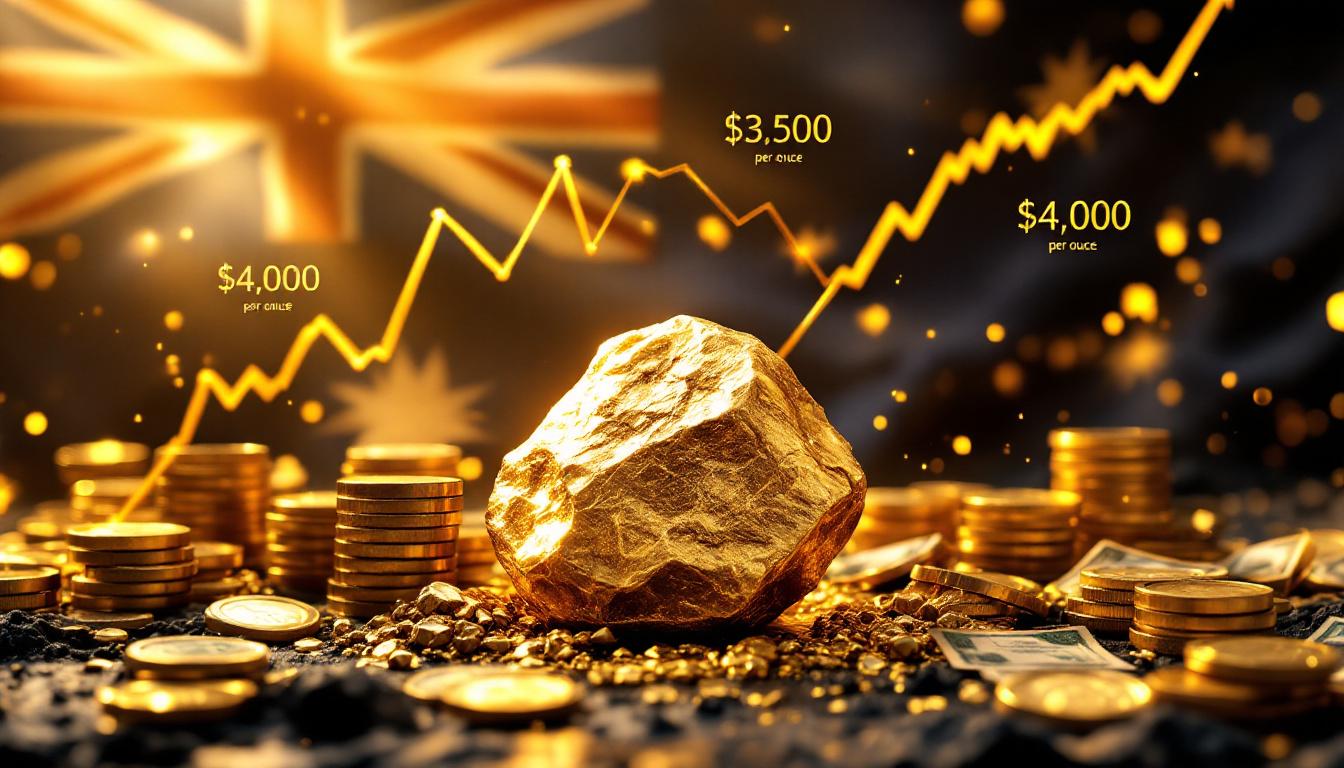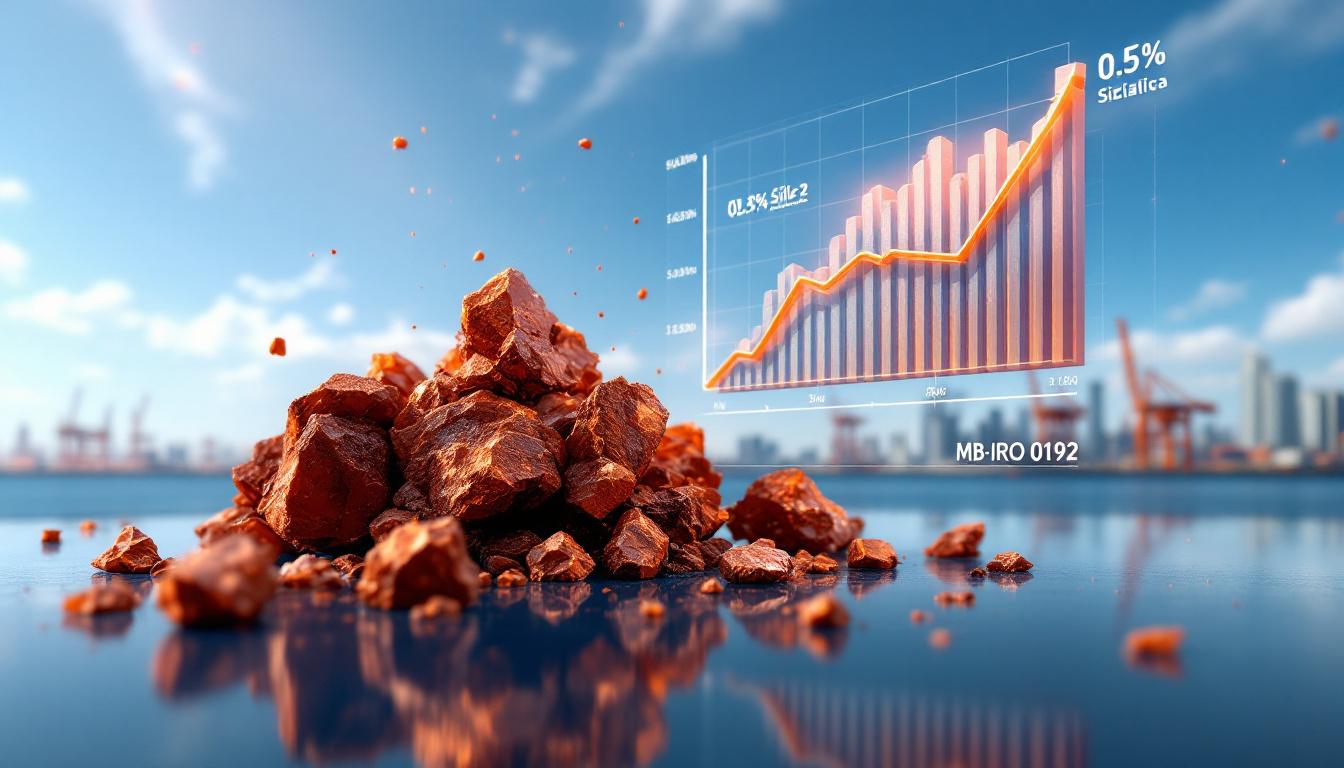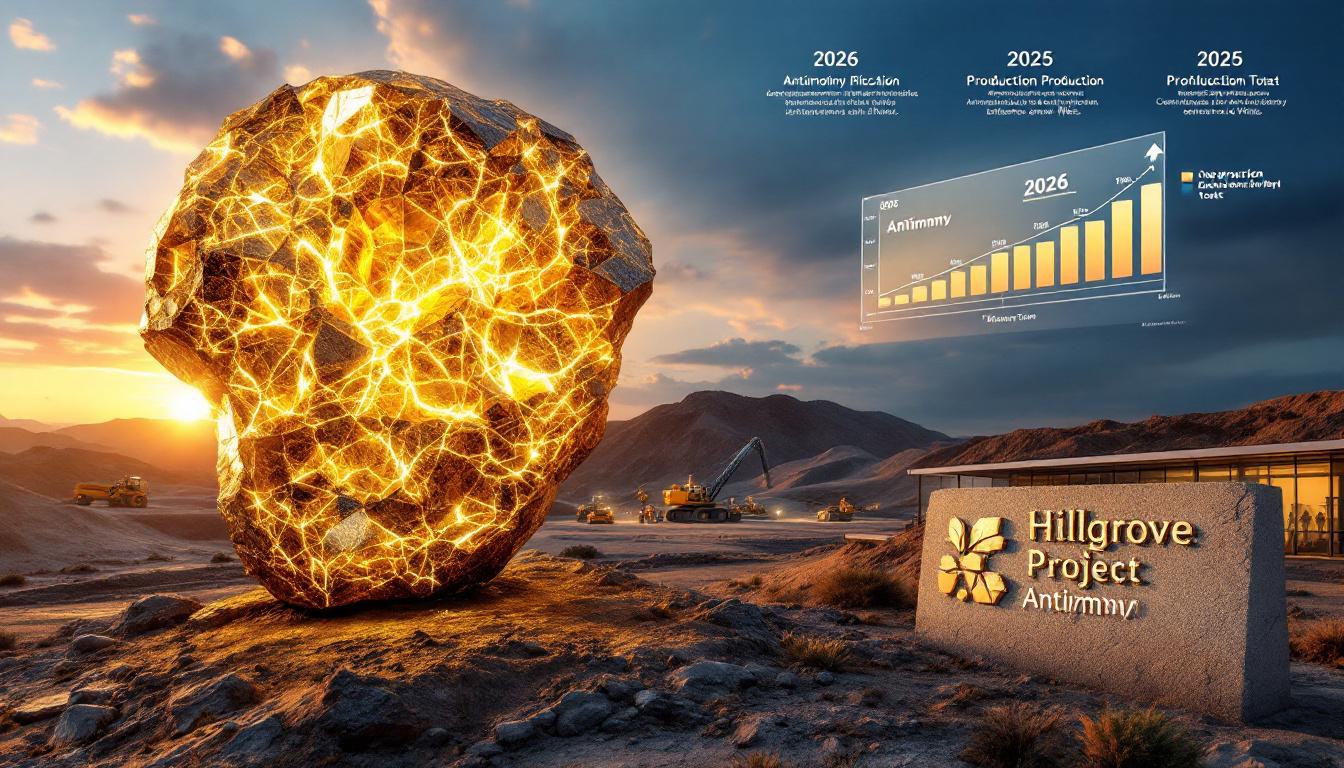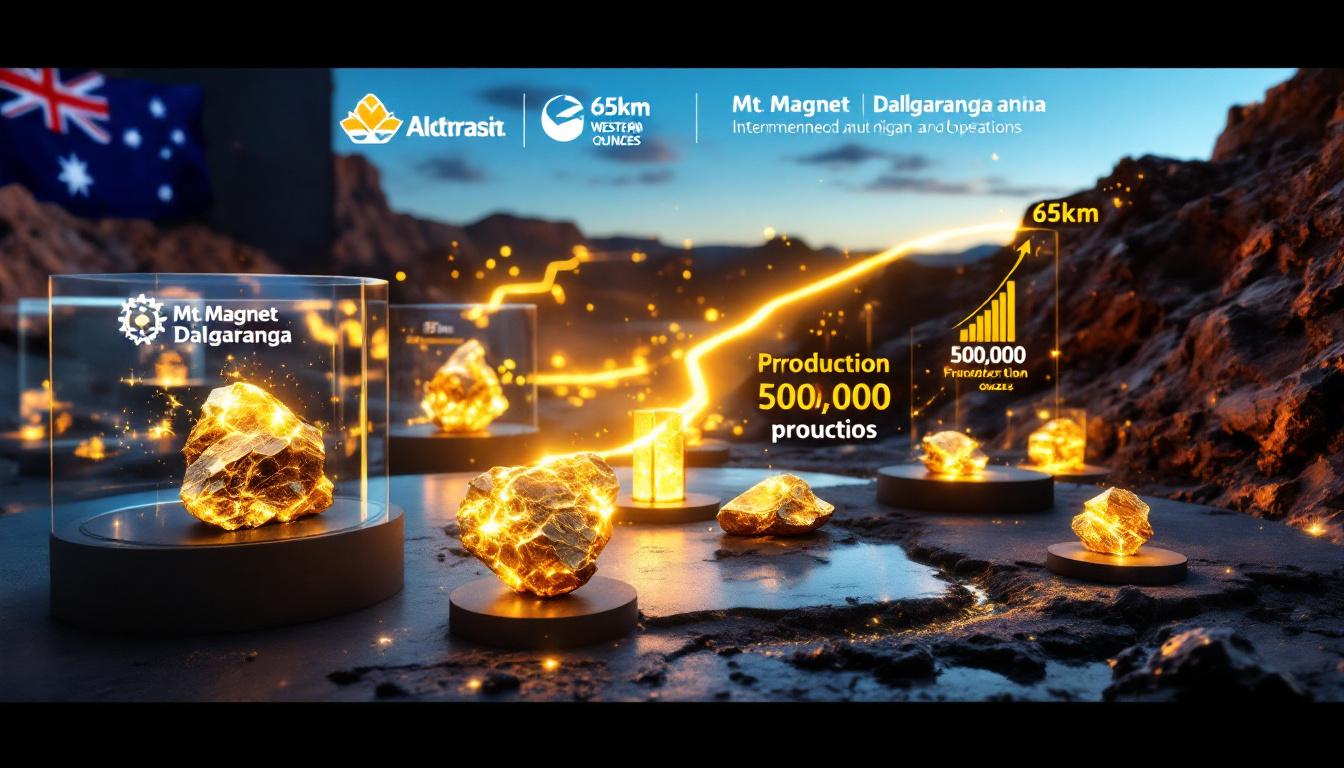What's Causing the Current Rare Earth Price Rally?
The rare earth market is experiencing a significant price surge driven primarily by bullish sentiment from major manufacturers' procurement activities. This strategic buying behavior has created a ripple effect throughout the supply chain, with affordable rare earth oxide supplies rapidly becoming scarce. The psychological impact of these large-scale purchases has transformed market dynamics despite minimal changes in fundamental demand patterns.
"Currently, rare earth market prices have risen significantly, mainly due to the bullish sentiment driven by procurement from major manufacturers." — SMM Market Analysts, July 2025
As inventory levels tighten, suppliers have strategically raised their quotations to capitalize on the evolving market conditions. This price adjustment mechanism demonstrates the sensitivity of rare earth reserves distribution to procurement patterns from dominant industry players, creating a self-reinforcing cycle of bullish sentiment.
Major Manufacturer Procurement Driving Market Momentum
The procurement strategies of leading manufacturers have become the primary catalyst for the current market momentum. These major players have accelerated their purchasing activities, creating immediate pressure on available supply. This behavior has triggered a psychological chain reaction where suppliers, anticipating continued scarcity, have become increasingly reluctant to offer materials at previous price points.
The market is experiencing what industry experts call a "procurement-induced sentiment shift" – where buying behavior from influential market participants creates a disproportionate impact on pricing relative to actual consumption increases. This phenomenon highlights the unique nature of rare earth markets, where relatively small changes in purchasing patterns can significantly influence global pricing structures.
Supply-Demand Dynamics Creating Price Pressure
The rapid depletion of affordable oxide supplies has created substantial upward price pressure throughout the rare earth value chain. What makes the current situation particularly noteworthy is the transmission effect between different market segments – price movements in oxide markets quickly reflect in metal and alloy markets as producers adjust their positions.
This supply constraint occurs against a backdrop of relatively unchanged end-user consumption, creating a market environment where prices move independently of fundamental demand growth. The resulting market tension stems from psychological factors rather than dramatic shifts in industrial consumption patterns.
Industry analysts note that this disconnect between sentiment and fundamentals creates potential vulnerability if major buyers reduce their procurement activities after meeting inventory targets. However, in the short term, the momentum appears self-sustaining as market participants position themselves strategically within the tightening supply environment.
How Much Have Rare Earth Prices Increased?
The rare earth market has experienced substantial price appreciation across multiple elements, with particularly significant movements in materials critical for permanent magnet applications. Current pricing data reveals a diverse pattern of increases, with some materials showing dramatic upward movement while others maintain relative stability.
Current Oxide Market Pricing Data
The rare earth oxide market demonstrates varying degrees of price pressure, reflecting the complex interplay of supply constraints and procurement patterns:
| Rare Earth Oxide | Current Price (Yuan/MT) | Price Trend |
|---|---|---|
| Praseodymium-Neodymium | 445,000-447,000 | Increasing ↑ |
| Dysprosium | 1,630,000-1,650,000 | Increasing ↑ |
| Terbium | 7,100,000-7,140,000 | Increasing ↑ |
| Gadolinium | 163,000-165,000 | Stable → |
| Holmium | 520,000-525,000 | Stable → |
| Erbium | 304,000-308,000 | Fluctuating ↕ |
Source: SMM Price Data, July 2025
The most significant price movements have occurred in elements critical to high-performance magnets – particularly praseodymium, neodymium, dysprosium, and terbium. These materials form the backbone of technologies essential for renewable energy and electric vehicle applications, making their price movements particularly noteworthy for downstream industries.
Metal Market Price Movements
The price increases in oxide markets have transmitted directly to the metal and alloy sectors, demonstrating the interconnected nature of the rare earth value chain:
| Rare Earth Metal/Alloy | Current Price (Yuan/MT) | Price Trend |
|---|---|---|
| Praseodymium-Neodymium Alloy | 545,000-550,000 | Increasing ↑ |
| Dysprosium-Iron Alloy | 1,580,000-1,600,000 | Increasing ↑ |
| Terbium Metal | 8,800,000-8,850,000 | Increasing ↑ |
| Gadolinium-Iron Alloy | 156,000-157,000 | Stable → |
| Holmium-Iron Alloy | 525,000-530,000 | Stable → |
| Lanthanum-Cerium Alloy | 17,000-19,000 | Stable → |
Source: SMM Price Data, July 2025
The stark contrast between the rapidly appreciating magnet-related materials and the stable pricing of other rare earths highlights the segmented nature of this market. Terbium metal in particular has reached extraordinary price levels, commanding nearly 8.85 million yuan per metric ton – reflecting both its scarcity and critical raw materials supply challenges.
"Oxide price increases have been transmitted to the metal market, with enterprises raising quotes to follow." — SMM Daily Market Report, July 2025
These price movements represent the direct transmission of supply constraints from raw material markets to processed materials, creating cascading effects throughout the supply chain. The differential between oxide and metal prices provides important insights into processing margins and value-added potential within the rare earth industry.
Why Aren't Transaction Volumes Matching Price Increases?
Despite the significant price appreciation across key rare earth materials, a curious disconnect has emerged between quoted prices and actual transaction volumes. This divergence highlights the sentiment-driven nature of the current market rally and raises questions about its sustainability without fundamental demand improvement.
Disconnect Between Price Sentiment and Actual Demand
The current market exhibits a classic case of sentiment-price disconnect, where psychological factors drive quotations higher despite limited evidence of consumption growth. This phenomenon creates a market environment characterized by increased inquiry activity but diminished transaction completion.
Market analysts observe that while prices have moved upward across most magnet-related rare earths, the volume of completed transactions has not kept pace. This pattern suggests that price movements are being driven more by strategic positioning than by genuine increases in industrial consumption.
"Downstream magnetic material enterprises have not seen an increase in orders… resulting in active inquiries but no actual transactions." — SMM Rare Earth Analysis, July 2025
This quote from industry analysts captures the essence of the current market predicament – the bullish sentiment in the market drove a significant increase in rare earth prices primarily due to supply-side reactions to major manufacturer procurement rather than organic growth in end-user demand.
Downstream Magnetic Material Producers Remain Cautious
Magnetic material manufacturers, who represent a critical link in the rare earth value chain, have reported no significant increase in their order books despite the price appreciation in their raw materials. This lack of improved downstream demand creates a challenging environment where these producers must carefully balance inventory management against price risk.
The cautious approach from magnetic material producers manifests in several observable behaviors:
- Increased price inquiries: Companies actively monitoring market conditions to assess price trends
- Selective purchasing: Buying only essential volumes rather than building inventory
- Extended negotiations: Lengthier discussions to secure favorable terms
- Just-in-time procurement: Minimizing inventory exposure to potential price corrections
This cautious stance reflects the economic reality these companies face – without corresponding increases in their own product pricing or volume, absorbing higher input costs directly impacts profitability.
Transaction Reality vs. Market Sentiment
The current market situation demonstrates the sometimes paradoxical nature of commodity markets, where prices can move independently of transaction volumes when sentiment becomes the dominant driver. Several key characteristics define the present market conditions:
- High quote activity: Suppliers actively raising price expectations
- Limited transaction completion: Fewer deals being finalized despite increased inquiries
- Persistent fundamental weakness: Underlying consumption patterns remain largely unchanged
- Psychological momentum: Price support coming primarily from strategic positioning rather than consumption
Industry veterans recognize this pattern as typical of sentiment-driven rallies, where prices can temporarily detach from physical market realities. The key question becomes how long such divergence can persist before either fundamentals improve to support prices or prices adjust downward to reflect actual demand conditions.
What's the Outlook for Rare Earth Prices?
The rare earth market finds itself at a critical juncture, with bullish sentiment driving prices higher despite transaction volume limitations. Understanding the potential trajectory requires careful analysis of both short-term momentum factors and longer-term fundamental considerations.
Short-Term Price Stability Expected
Market analysts broadly anticipate that rare earth prices will maintain their current elevated levels in the near term, supported by the positive sentiment established through major manufacturer procurement activities. This psychological momentum has created a market environment where suppliers remain reluctant to reduce quotations despite limited transaction completion.
"It is expected that in the short term, driven by market sentiment, rare earth prices will continue to hold up well." — SMM Market Forecast, July 2025
This assessment from industry experts reflects the powerful influence of market psychology on price formation in specialized commodity markets like rare earths. The inertia established by recent price movements typically requires significant countervailing forces to reverse, suggesting price stability even without dramatic improvements in fundamental demand.
Several factors support this short-term stability thesis:
- Strategic inventory positioning: Major buyers have established new price benchmarks
- Supply response limitations: Producers cannot rapidly increase output to capitalize on higher prices
- Psychological resistance to price reductions: Suppliers hesitant to accept lower prices after recent gains
- Limited distressed selling pressure: Adequate financial positioning throughout supply chain
These factors collectively create an environment where prices can remain elevated even without substantial transaction volume support.
Factors That Could Impact Future Price Trajectory
While short-term stability appears likely, several critical factors could meaningfully influence the direction of rare earth prices moving forward:
Sustainability of Major Manufacturer Procurement
The current rally has been primarily driven by procurement activities from major manufacturers. The sustainability of these buying patterns represents perhaps the most significant variable in the near-term price outlook. If these buyers reduce their activity after meeting inventory targets, a key source of market support could diminish.
Key questions include:
- Are manufacturers building strategic reserves or responding to anticipated demand increases?
- Will procurement patterns remain consistent or follow a more cyclical approach?
- How sensitive are these buying decisions to broader economic conditions?
Downstream Demand Response
The response from downstream magnetic material producers and other end-users will ultimately determine whether current prices find fundamental support or require adjustment. If higher rare earth prices cannot be passed through the value chain due to end-product pricing constraints, pressure could eventually flow backward to raw material markets.
Critical considerations include:
- Will magnetic material producers secure price increases from their customers?
- Can end-product manufacturers absorb higher component costs?
- Will substitution efforts accelerate if prices remain elevated?
New Supply Developments
The rare earth supply landscape continues to evolve, with development projects outside China progressing toward production. Any meaningful increase in non-Chinese supply could alter market dynamics, particularly if it coincides with periods of demand moderation.
Projects to monitor include:
- Expansion activities at established operations
- Advanced-stage development projects approaching production decisions
- Processing capacity additions that could alleviate separation bottlenecks
Global Economic Conditions
Broader economic factors inevitably influence rare earth markets through their impact on end-use demand in sectors like electric vehicles, wind energy, and consumer electronics. Any significant deterioration in global growth projections could weaken demand expectations and challenge current price levels.
Policy and Regulatory Changes
Government actions related to critical minerals policy and trade regulations can substantially impact rare earth markets. Policy changes in major producing or consuming nations bear close monitoring for potential market effects, especially as countries worldwide focus on critical minerals energy security.
Monitoring Market Indicators
Market participants should closely track several key indicators to anticipate potential shifts in rare earth price trajectories:
- Transaction volume trends: Are deals being completed at current price levels?
- Inventory positions: Are stocks building or depleting throughout the supply chain?
- Order patterns: Are magnetic manufacturers seeing improved demand?
- Production announcements: Are suppliers expanding output in response to higher prices?
- Policy developments: Are governments implementing measures affecting production or trade?
These indicators can provide early signals of changing market dynamics before they manifest in price movements.
How Does This Price Movement Compare to Historical Patterns?
The current rare earth price rally demonstrates characteristics that both align with and diverge from historical market behavior. Analyzing these patterns provides valuable context for understanding potential future developments.
Sentiment-Driven Rallies in Historical Context
The present price increase exemplifies a pattern observed in previous rare earth market cycles, where sentiment can temporarily override fundamentals. Historical analysis reveals that rare earth markets have experienced multiple periods where prices moved primarily based on psychological factors rather than fundamental demand shifts.
This pattern was particularly evident during:
- 2010-2011 Price Spike: When export restrictions triggered unprecedented price increases
- 2017 Environmental Inspections: When supply concerns drove significant price appreciation
- 2021 Post-Pandemic Recovery: When anticipated demand growth fueled bullish sentiment
Each of these episodes shared a common characteristic with the current situation – price movements that initially outpaced transaction volume growth. Historical experience suggests that such rallies typically require eventual support from improved end-user demand to be sustainable over the medium to long term.
A key distinguishing factor in the current rally is the primary driver – major manufacturer procurement rather than supply disruption or regulatory change. This nuance may influence how the market evolves compared to previous cycles, particularly for investors monitoring mining market perspectives.
Supply Chain Response Mechanisms
The rare earth supply chain has developed increasingly sophisticated response mechanisms following previous episodes of price volatility. These adaptations reflect lessons learned from past market dislocations and aim to reduce vulnerability to price shocks.
These evolved response mechanisms include:
Strategic Inventory Management
Market participants throughout the supply chain have adopted more nuanced inventory strategies that balance risk mitigation against capital efficiency. These approaches often include:
- Tiered inventory systems: Maintaining different stock levels for critical versus non-critical materials
- Dynamic adjustment protocols: Formulaic approaches to inventory targets based on price trends
- Collaborative planning: Increased transparency between supply chain partners regarding needs
Diversified Sourcing Strategies
End-users have increasingly pursued multi-source approaches to reduce dependency on single suppliers or regions. These strategies encompass:
- Geographic diversification: Developing supply relationships across multiple regions
- Material diversification: Exploring alternative compositions or technologies
- Recycling integration: Incorporating recovered materials into supply streams
Price Risk Management Approaches
Financial approaches to managing price volatility have become more sophisticated, including:
- Longer-term contracts: Extended agreements with price adjustment mechanisms
- Index-based pricing: Linking contract prices to published benchmarks
- Strategic partnerships: Risk-sharing arrangements between suppliers and consumers
Enhanced Communication Between Supply Chain Tiers
Information flow between supply chain participants has improved significantly, reducing information asymmetries that previously exacerbated price volatility:
- Market intelligence sharing: More transparent communication regarding demand trends
- Early warning systems: Protocols for alerting partners to potential disruptions
- Collaborative forecasting: Joint development of demand projections
These evolved response mechanisms may moderate extreme price movements compared to historical episodes, potentially leading to more measured market adjustments.
Want to Stay Ahead of the Next Rare Earth Discovery?
Discovery Alert's proprietary Discovery IQ model provides instant notifications when significant rare earth discoveries are announced on the ASX, giving you the edge to act before the market moves. Visit our discoveries page to see how previous mineral discoveries have created substantial returns for early investors.




